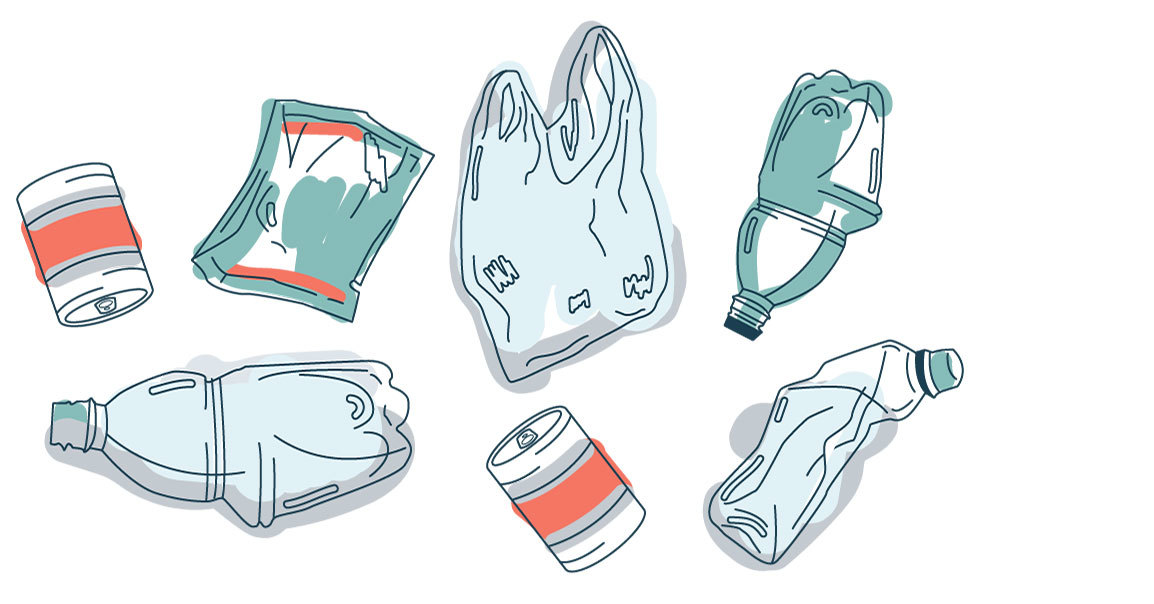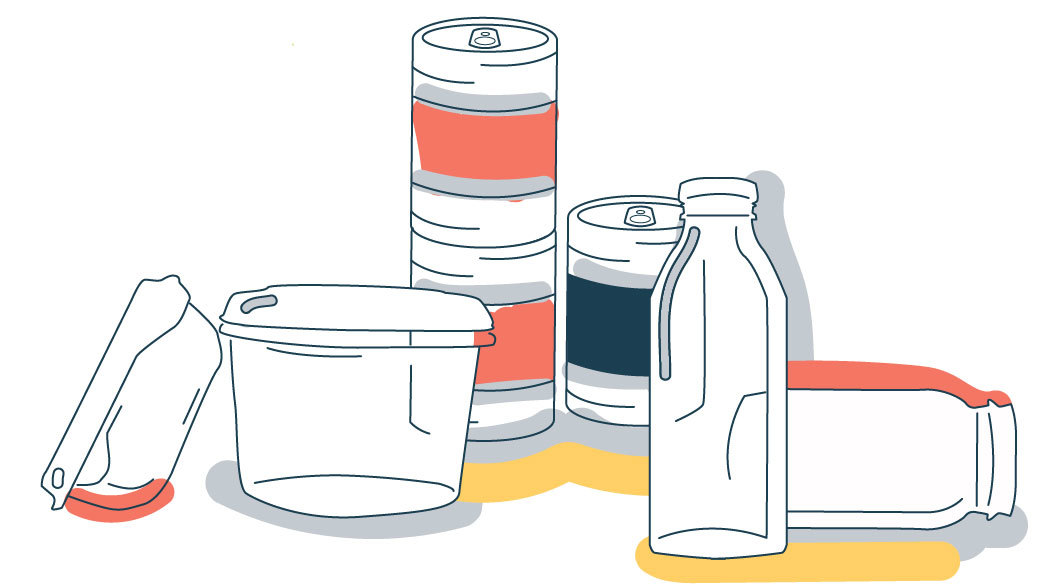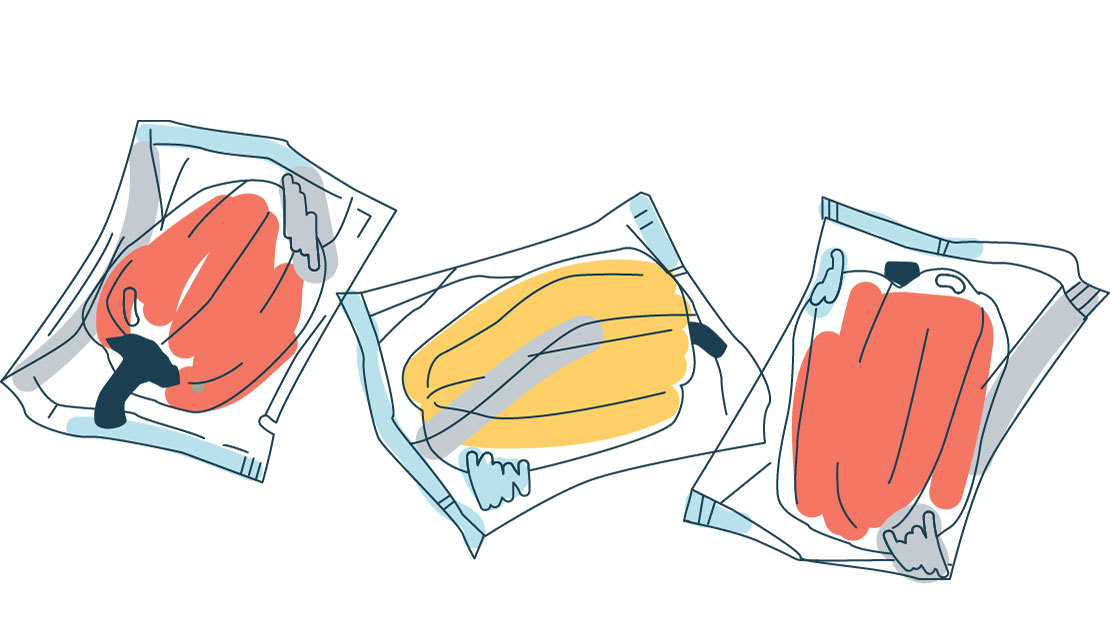The Quest for Zero Waste Begins: Week 1

As we approach Earth Day on 22 April, students Katy Barnard and Yes de Jong share their experiences in trying to live a zero-waste lifestyle. Over the course of the next five weeks, we’ll post their journey, their struggles, and reflections.
According to the World Bank, we globally produce over two billion tonnes of waste per year. That figure is likely to increase by 70% by 2050 if no actions are taken.
As part of our education, we are working on a waste management project by the Amsterdam University of Applied Sciences.
In order to understand better the challenges at hand, we wanted to look into the flip coin of the waste problematic: could we, as society, in fact, lead a zero-waste lifestyle? As designers, we hail the user-research flag to the core, but on this occasion, we thought it more helpful to do our very own self-exploration.
This was week one.

Katy: Every trip to the grocery store is like a treasure hunt!
To begin this challenge, I knew exactly where I needed to go: YouTube. I searched “zero waste lifestyle” and absorbed the wise hacks of those who have walked this path before me. They told me to befriend local markets and bulk grocery stores, to invest in a kit of reusable containers and to remember to not ask for to-go packaging at cafes. Early on, I admitted to myself that I was never going to become that obsessive girl who keeps all of her trash from 5 years in a jar. Instead, for me, this experiment is to simply find out where the barriers are so we can guide others in taking small steps to reduce their own waste footprint, too.
Already, I would consider myself a sustainably conscious person, most likely due to growing up in a hippie town in Oregon. I always carry a reusable water bottle with me, I use reusable grocery bags, I collect more jars than any person should and I choose the unwrapped cucumber in the grocery store over the wrapped one. But still, my habits were going to have to change.
But this brought a new question: how many do I need? Prepackaged foods eliminate that decision.
On the second day, I ran into my first challenge: finding mushrooms without packaging. That evening I was going to a friend’s house to make risotto, and I was in charge of mushrooms. I stopped to think about where I should go, because I knew my usual grocery store only sells them in never-degrading styrofoam. I went on a hunt to find organic stores in my neighborhood. There was no luck at the first store. But at the second, I hit the jackpot! I walked in and sitting at the bottom of the refrigerated section was a tub of free-standing mushrooms! It brought me more joy than I should admit. I pulled my reusable produce bag out to fill up. But this brought a new question: how many do I need? Prepackaged foods eliminate that decision. There’s only one size of mushroom packaging, so that’s the one you get. I now had more autonomy than I was used to. I pondered this and then grabbed 3 small handfulls. This experience set the tone for the new type of shopping in my life.

Yes: I feel overwhelmed by how restricted I am
Prior to starting this challenge, I was already questioning my ability to make such a drastic change. And indeed, after the first few hours, I made a mistake. The school’s canteen gives out free fortune cookies wrapped in plastic. I gladly took one and opened it without any hesitation. Only after I wanted to dispose of the wrapper, I understood what had just happened. I felt very naive for assuming I could adopt this lifestyle so easily and after this embarrassment, I felt that I needed to take time to prepare for what was ahead of me.
My daily commute takes 1 hour both ways, meaning that I am exposed to multiple offers of fast and convenient food every day, coming from caterers, kiosks and vending machines. In public transport, people indulge in the most desirable products after a long work day — and it is very easy to do so too.
Walking along the aisles of the supermarket, I felt demotivated, and I imagined myself living on beans for a month.
To prevent myself from falling for this trap, I must prepare and do it well. I had to tackle this issue with a good dose of research: I started browsing the web and did an inventory of my house — apart from a few plastic food containers, I had almost nothing. The internet offered me sustainable and food friendly options, but they were pricey to say the least. Instead, Katy advised me to collect all empty glass jars and pots that are usually filled with peanut butter or beans, and start using them to collect in nuts, rice or pasta.
Step two was facing the inevitable: groceries. Walking along the aisles of the supermarket, I felt demotivated, and I imagined myself living on beans for a month. I felt devastated by the small amount of options I had and ended up leaving short after. I decided to try visiting the local market and felt more encouraged seeing what they had to offer: a big range of seasonal fruits and vegetables. Thanks to that, I still had a few reasonable meals. At dinner, I got to cheat a few times as I ate out or someone cooked for me. That’s how I got through the evenings.
Note: For this experience, Yes and Katy have set out strict ground-rules: use of own reusable containers as much as possible; no plastic packaging at all (if you have to, must reuse twice); glass is allowed and preferred; cans are allowed if glass is not available; paper packaging is tolerated but preferably not. The no-waste month took place pre-quarantine times, in February.
All illustrations by Yes de Jong

